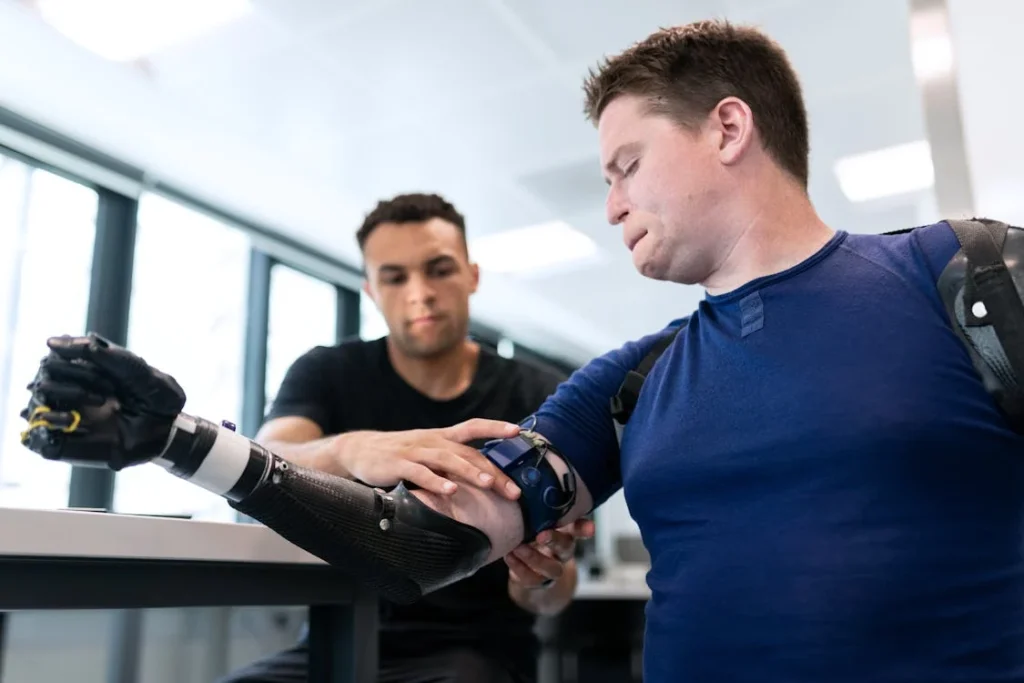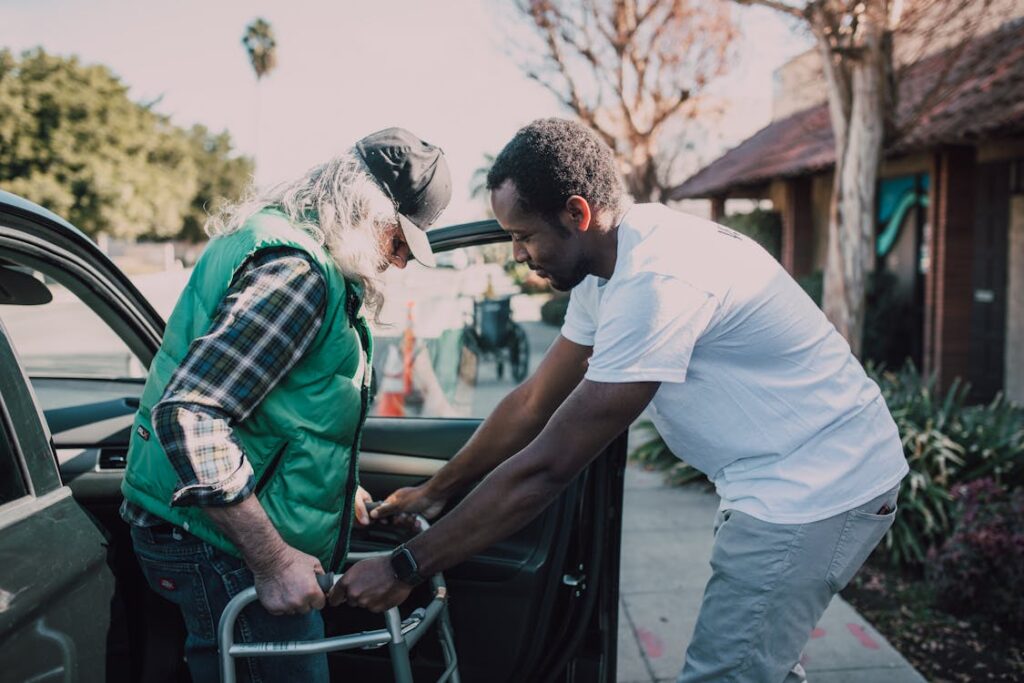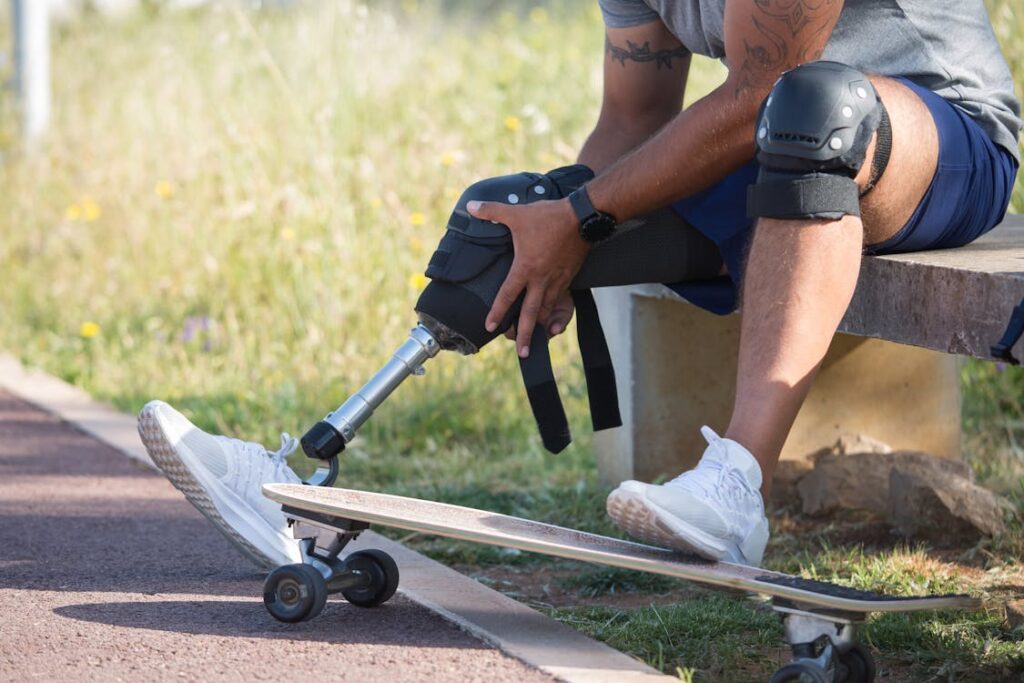When someone faces the risk of losing a limb, two choices often come up—limb salvage surgery or amputation followed by prosthetic use. Both are life-changing paths. And both come with serious medical, emotional, and financial costs. But one often-asked question is: Which option is more affordable in the long run?
The answer isn’t simple, and it depends on many things—like the kind of injury, the person’s lifestyle, where they live, and what kind of support they have. Still, understanding the costs involved in both options—not just in money, but also in recovery time, follow-up care, and quality of life—can help people make better, more informed choices.

Understanding Limb Salvage and Amputation
Before comparing the costs, it’s important to understand what each option really means in practical terms. Both choices aim to improve life after a serious injury or illness, but they take very different paths to get there.
What Is Limb Salvage Surgery?
Limb salvage surgery is a medical procedure used when a leg or arm is badly injured or affected by disease, like cancer or infection. The goal is to save the natural limb.
This usually involves removing damaged tissue, repairing or replacing bones, and sometimes adding metal plates or rods. It’s common in cases where the person has enough healthy tissue to support healing.
This surgery can be very complex. A team of surgeons may be involved, and it may take many hours in the operating room.
Recovery often includes hospital stays, physical therapy, and additional treatments to reduce the risk of infection or complications. People who go through limb salvage usually need regular follow-ups to make sure the limb is healing properly.
What Is Amputation and Prosthetic Use?
Amputation involves removing the damaged part of the limb. This might sound extreme, but in many cases, it can help people avoid long-term pain, repeated surgeries, or serious infections.
Once the limb is removed, the person can be fitted with a prosthetic arm or leg, which allows them to regain movement and independence.
Modern prosthetics are designed to be light, easy to use, and comfortable. Some even come with sensors or grip technology to help with tasks like holding a pen, walking on uneven ground, or even climbing stairs.
Learning to use a prosthetic well does take time, and often includes physical therapy and training.
Now that we have a basic understanding of both options, let’s look at how their costs compare—starting with the medical bills right after the injury or diagnosis.
Short-Term Costs: Surgery, Hospital Stay, and Immediate Care
When someone faces a decision between limb salvage and amputation, one of the biggest factors early on is the cost of the initial treatment. This includes the surgery itself, hospital stay, doctor’s fees, and any immediate post-surgery care.
Cost of Limb Salvage Surgery
Limb salvage is almost always more expensive at the start. The surgery is usually longer and more complicated than amputation. It may involve several specialists, such as orthopedic surgeons, plastic surgeons, and vascular surgeons.
In many cases, bone grafts or implants are needed, and sometimes even custom-made metal supports or external fixators are used to hold the limb in place while it heals.
The hospital stay after limb salvage can last from several days to a few weeks, depending on how the surgery went and how quickly the patient begins to heal.
There may also be a need for intensive care, antibiotics, blood transfusions, and imaging tests such as X-rays or MRIs.
The upfront cost in India for limb salvage surgery can range anywhere from ₹3 lakhs to ₹10 lakhs or more, especially if multiple surgeries are required. In private hospitals, these numbers can rise further.
These costs can vary greatly depending on the city, hospital, and complexity of the injury.
It’s also important to know that limb salvage doesn’t guarantee full recovery. Some patients may need more surgeries down the road, which adds to the financial burden.
Infections, poor healing, and chronic pain are not uncommon, which can further increase costs over time.
Cost of Amputation
Amputation, in contrast, is often quicker and less expensive upfront. The surgery is usually shorter, often performed by a single surgeon, and the hospital stay tends to be shorter as well. In uncomplicated cases, the patient might leave the hospital within a few days.
In India, the cost of an amputation surgery can range between ₹50,000 to ₹2 lakhs, depending on the level of amputation (above or below the knee/arm) and the facility.
Even with added costs for pain management and wound care, the overall cost is typically lower than limb salvage in the beginning.
However, the cost doesn’t end with the surgery. Once the limb has healed, the person will need a prosthetic, and possibly more than one over their lifetime.
But even considering that, many families find the short-term financial hit of amputation easier to manage than limb salvage.

Long-Term Financial Considerations
The cost of treatment doesn’t stop after the surgery. In fact, long-term expenses are often where the biggest differences between these two options show up.
From follow-up care to mobility aids, the lifetime financial impact can be very different depending on the path taken.
Ongoing Costs After Limb Salvage
Even if the limb is saved, the journey doesn’t end there. Many people need months or even years of physiotherapy to regain strength and movement.
This includes regular appointments with a physiotherapist, exercises to do at home, and possibly the use of braces or walking aids.
Some patients also develop chronic pain, which may need ongoing medications, nerve blocks, or even further surgeries. In some cases, the salvaged limb might never fully return to normal function.
Infections, especially if metal implants are involved, can be a serious risk that requires hospital visits and antibiotic treatments.
Over time, the total cost of managing these complications can be very high. Some studies suggest that when all expenses are added up over ten years, limb salvage can be more expensive than amputation, especially if repeat surgeries are needed.
Ongoing Costs After Amputation
People who undergo amputation have a different kind of financial journey. After the surgery and healing process, the main cost is the prosthetic limb.
A basic prosthetic limb in India can cost anywhere from ₹25,000 to ₹1 lakh. Advanced models, like bionic hands or microprocessor knees, can cost ₹2 lakhs to ₹10 lakhs or more.
But prosthetics don’t last forever. Most need to be replaced every three to five years, depending on wear and tear, changes in body weight, and new technology. Children and teenagers may need replacements more often as they grow.
Along with the cost of the prosthetic itself, there are also costs related to maintenance, repairs, and fittings. In some cases, people may need to travel to a certified center for adjustments.
Physical therapy is also part of the recovery journey, but in many cases, it lasts for a shorter time compared to limb salvage.
Despite these costs, some people find prosthetic use easier to manage long-term, especially when they get good support and access to local services.
Quality of Life and Hidden Costs
Money isn’t the only thing that matters. The way each option affects a person’s day-to-day life is just as important. While it’s harder to put a price tag on things like independence or pain levels, these are major factors in long-term satisfaction.
Life After Limb Salvage
Keeping your natural limb can help with emotional healing, especially for those who have strong feelings about limb loss. But that doesn’t always mean life returns to normal.
Some people live with stiffness, limited movement, or pain for years. Activities like walking, climbing stairs, or lifting things can remain difficult.
Jobs that involve physical labor may become impossible. This can reduce a person’s income and change the entire financial picture over time.
If someone has to leave their job or change careers, that’s a cost that doesn’t show up in hospital bills but can impact the whole family.
There’s also the emotional cost of repeated medical visits. For some, the stress of never fully recovering can take a toll.
Life After Amputation and Prosthetics
Amputation comes with its own set of challenges, but many people adapt well over time. After healing, and with the right prosthetic, many regain a high level of independence. They may return to work, take part in sports, and lead active lives.
That said, the emotional side of limb loss is real. It can take time to adjust, and not everyone finds the journey easy. But for many, once they’ve gone through rehab and training, the prosthetic becomes a part of their life that helps them move forward.
The ability to plan and manage future costs, such as replacing the prosthetic every few years, allows some people to feel more in control of their financial future compared to the uncertainty of ongoing medical issues after limb salvage.

Access to Care and Support Services
In India, access to care plays a big role in deciding between limb salvage and amputation. Even if a treatment is possible in theory, it might not be easy to get in practice.
Where a person lives, their income level, and the healthcare infrastructure around them can change everything.
Getting Limb Salvage in India
Limb salvage requires a well-equipped hospital and a skilled team of surgeons. It also depends on access to advanced imaging, surgical implants, sterile operation theatres, and follow-up care.
This kind of setup is more common in large private hospitals or teaching hospitals in metro cities. People in smaller towns or rural areas may have to travel far to get this care.
After the surgery, the patient needs regular visits to check healing, manage pain, and prevent infection. In many cases, this means repeated trips to the hospital, which can be hard for those living far from major centers.
Travel, time off work, and caregiver involvement all add hidden costs to the recovery process.
The same challenges apply to physical therapy. While big cities offer well-trained physiotherapists and rehab centers, access in smaller cities may be limited.
Some people may even skip therapy altogether due to distance or cost, which can slow or prevent full recovery.
Getting Amputation and Prosthetics in India
Amputation is more widely available in India, especially in district hospitals and general medical centers.
While prosthetics have advanced a lot in recent years, the key is getting a proper fit and regular follow-up, which isn’t always possible everywhere.
Thankfully, prosthetic clinics have been growing in number. Many of these are linked to hospitals or NGOs, and some offer subsidized or low-cost options. Others offer on-site physical therapy and training to help new users adjust quickly.
Still, challenges remain. Many people don’t know where to go after amputation. There’s a lack of clear referral systems between hospitals and prosthetic providers.
People may also struggle to get repairs or adjustments when something goes wrong with their prosthetic, especially in rural areas. When prosthetics break or stop fitting well, they need quick service to avoid affecting mobility and daily life.
The recent rise of local prosthetic manufacturers and rehab services in India is helping to reduce these gaps, but there’s still a long way to go to ensure equal access for all.

Insurance, Government Support, and Out-of-Pocket Costs
In a country like India, where most medical expenses are paid out of pocket, insurance and government support can make a huge difference.
Unfortunately, coverage varies widely depending on the type of hospital, the state you live in, and whether you’re using private or public healthcare.
Insurance and Limb Salvage
Private health insurance can help cover some of the initial costs of limb salvage. But many insurance plans have limits on surgical costs, hospital stays, or pre-existing conditions.
Some might not cover multiple follow-up surgeries or long-term rehab. Even if covered, getting claims processed can take time, adding stress to the recovery process.
Government hospitals sometimes offer free or subsidized care, but waiting times can be long and facilities may be overburdened. For people without private insurance, this can limit their options for timely limb salvage.
Overall, while insurance can help with the initial cost of surgery, it rarely covers the full journey — especially when multiple procedures and years of follow-up are needed.
Insurance and Prosthetics
Health insurance in India often does not cover the cost of prosthetics at all. In some cases, a small amount is allowed under rehabilitation or assistive devices, but it may not be enough to cover the actual price of a good-quality prosthetic.
This leaves most families paying for the device out of pocket.
That said, prosthetic costs are more predictable. You know that every few years, a replacement will be needed, and you can plan for it.
Some NGOs and government schemes, such as the Assistance to Disabled Persons (ADIP) scheme, offer support to low-income families to help with prosthetic costs. Certain states also offer additional aid through social welfare departments or district disability offices.
This support isn’t always easy to access, but with awareness and guidance, many families do manage to get help for at least part of the expense.
Lifetime Costs: A Long-Term Financial Outlook
If you only look at the first hospital bill, limb salvage might seem like the better choice. It keeps the natural limb and avoids the emotional difficulty of limb loss.
But when you look at the entire picture — including rehab, repeat surgeries, therapy, travel, time off work, and long-term health — it’s clear that limb salvage comes with many hidden costs.
Financial Planning for Limb Salvage
Over ten to fifteen years, someone who chooses limb salvage may end up spending more than they expected, especially if the first surgery isn’t successful or if complications happen later.
Repeat surgeries, infections, and the need for regular imaging and consultations can stretch the budget in ways that are hard to predict.
If the salvaged limb never returns to full function, this might also affect a person’s job or career. People in physical jobs like farming, driving, or construction may find it hard to return to work, which can reduce household income and increase dependency.
Financial Planning for Prosthetic Use
On the other hand, amputation followed by prosthetic fitting allows for more planning. Once the initial cost is managed, the future costs are more predictable.
You know when the prosthetic will need to be replaced. You can budget for routine maintenance. And with the right support, many people return to work and lead active lives.
The cost of modern prosthetics has come down in recent years, especially with local manufacturers offering high-quality options at more affordable prices.
Combined with improvements in training and rehabilitation, this gives many people a real chance at rebuilding their lives without being financially overwhelmed.
While no choice is truly cheap, the predictability of prosthetic use makes it easier to manage over a lifetime for many families.

Emotional and Psychological Costs
Money isn’t the only thing that matters when deciding between limb salvage and amputation. The emotional and psychological impact plays a powerful role too.
Recovery isn’t just about the body. It’s about the mind, relationships, confidence, and how a person sees their own future.
Mental Health After Limb Salvage
Saving a limb can feel like a win. People often feel relieved to still have their arm or leg after surgery. This can be a big emotional boost at first.
But limb salvage often comes with long periods of uncertainty. Recovery may be slow. There might be pain, stiffness, or fear that the limb won’t work like it used to.
Some people experience frustration when they can’t do basic tasks, even though they still have their limb. Over time, this can lead to anxiety or even depression, especially if they feel stuck in their recovery.
Long-term medical care can also cause stress. Constant hospital visits, therapy sessions, and fears about infection or another surgery can weigh heavily on a person’s mind.
For people living far from big hospitals, travel itself can feel like a burden. Families may get tired, relationships may become strained, and confidence can slowly fade when progress is slow or uncertain.
Mental Health After Amputation
Amputation brings its own emotional challenges. The first few weeks can be very hard. Losing a limb can feel like a personal loss. Some people experience shock, grief, or even anger. This is a completely natural response.
But for many, once they begin using a prosthetic and regain some independence, things start to shift.
Learning how to walk again, dress themselves, or hold something with a prosthetic hand often brings a sense of achievement. That feeling of progress helps many people rebuild their confidence.
Some say that once the pain from the damaged limb is gone, they start to feel stronger—not just physically, but mentally. They know they’ve overcome something big.
It doesn’t mean life is perfect. But with support from friends, family, and rehab teams, many people find a new sense of balance in life.
In both cases, mental health support is very important. Counseling, support groups, and simple conversations can make a huge difference in helping someone heal emotionally—not just physically.
Mobility and Lifestyle Freedom
One of the most important questions to ask is: “What kind of life do I want after treatment?” The answer may guide the choice more than the cost.
Movement After Limb Salvage
When limb salvage goes well, people can often return to walking or moving with their natural limb. This can feel more comfortable than learning to use a prosthetic. There’s no need to put on or take off a device, and for some, that feels more normal.
However, the success of movement depends on how well the surgery and recovery go. Some people may always need a walking stick, brace, or support.
Others may not be able to run, climb stairs easily, or lift heavy objects. For some, the saved limb remains weak or painful, which limits mobility.
There is also the chance that limb salvage doesn’t work in the long run. If infections or bone damage come back, amputation may be needed later anyway.
When that happens, the person has already gone through one long recovery and must now start a new one.
Movement With a Prosthetic
At first, learning to move with a prosthetic can be difficult. It takes time to find the right fit, build strength, and adjust to the new way of walking or using your arm. But over time, with therapy and practice, most users adapt well.
Today’s prosthetics are designed to support active lives. People run marathons, dance, drive, and return to full-time jobs.
While this may not be true for everyone, the potential for high mobility and independence is real—especially with a well-fitted prosthetic and a good rehab program.
For children and young adults, prosthetics can offer a fresh start. As their bodies grow or their interests change, their prosthetic can be updated.
They’re not limited by the damage to a limb that may never fully recover. They can aim for a new lifestyle that works for them, even if it’s different from before.

Social Impact and Stigma
In some communities, how others view your condition can affect your life in big ways. Stigma can make people feel ashamed, isolated, or less capable—even when they are doing just fine.
Social Perception of Limb Salvage
Since the limb looks “normal” from the outside, people with salvaged limbs may not face as much social stigma. This can make social life and public appearances easier. But hidden pain or mobility issues can still affect daily life, even if others don’t notice.
Some people may feel frustrated that they look fine but don’t feel fine. They may feel pressure to do more than they’re able to, just to meet others’ expectations. This can make recovery even harder.
Social Perception of Amputation and Prosthetics
Amputation can sometimes draw attention, especially in communities that aren’t used to seeing prosthetic limbs. But things are changing.
More and more people are sharing their journeys openly. Schools, workplaces, and public spaces are becoming more accepting and supportive.
Many prosthetic users now lead by example, showing that life doesn’t stop after limb loss. Athletes, artists, teachers, and even business owners with prosthetic limbs are becoming role models.
This is helping to reduce stigma and inspire others to accept and adapt.
When someone uses a prosthetic well, people tend to focus less on the limb they lost and more on what they’re doing with their life now.
Conclusion
Choosing between limb salvage and amputation with a prosthetic is deeply personal. Both come with real costs—financial, emotional, and physical. Limb salvage may preserve the natural limb, but it often involves longer recovery, higher upfront expenses, and the risk of future complications. Amputation, though emotionally tough at first, can lead to a more predictable, active life with the right prosthetic and support.
There is no one-size-fits-all answer. The right choice depends on the individual’s health, lifestyle, location, support system, and long-term goals. What matters most is making an informed decision with the help of skilled doctors, trusted caregivers, and honest conversations about what life could look like on either path.
If you or someone you know is facing this decision, take the time to ask questions, explore options, and think beyond the hospital bill. Quality of life matters just as much as cost—maybe even more.



